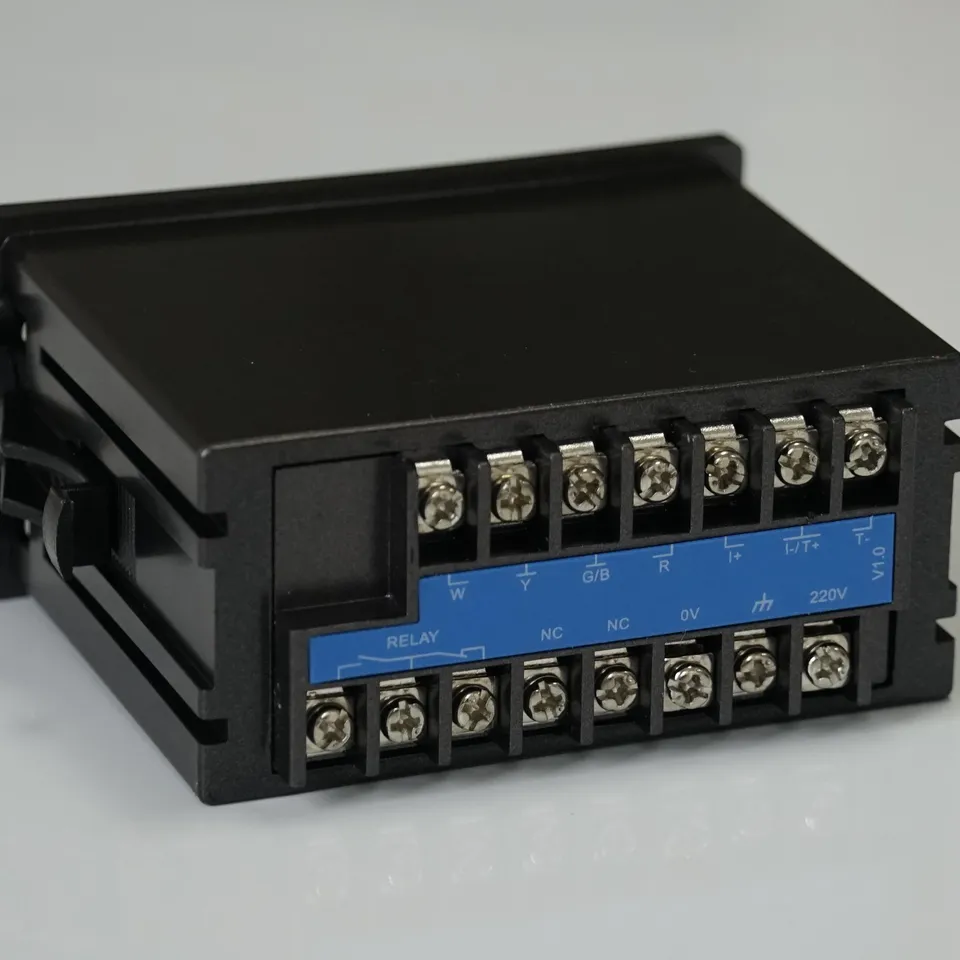目录
了解柴油流量传感器在现代发动机中的重要性
柴油发动机长期以来一直是重型机械、运输和发电行业的支柱。它们的效率、耐用性和扭矩使其在各个领域不可或缺。然而,要最大限度地提高柴油发动机的性能和使用寿命,需要对多个参数进行细致的监测和控制,其中燃油流量至关重要。
在柴油发动机领域,燃油流量的精确测量和调节对于最佳性能和效率至关重要。柴油流量传感器在此过程中发挥着关键作用,提供有关燃油消耗的实时数据并确保发动机在其设计参数内运行。这些传感器是现代发动机管理系统的组成部分,可以对燃油输送进行微调,以适应不同的负载条件和操作要求。
柴油流量传感器的主要功能之一是准确测量进入发动机的燃油流量。这些数据对于计算燃油效率、诊断燃油泄漏或堵塞等潜在问题以及优化燃烧过程至关重要。通过监测燃油流量,发动机操作员可以识别低效率并采取纠正措施,以提高性能并降低运营成本。
此外,柴油流量传感器有助于提高柴油动力设备的整体安全性和可靠性。通过检测燃油流量的异常情况,例如突然波动或与预期值的偏差,这些传感器可以提醒操作员潜在的故障或危险情况。及早发现此类问题可以防止代价高昂的停机、设备损坏甚至事故,从而保护人员和资产。
除了监测燃油流量外,柴油流量传感器在排放控制中也发挥着至关重要的作用。随着环境问题的日益严重和法规的日益严格,控制柴油发动机的废气排放已成为全球各行业的首要任务。通过准确测量燃油消耗和优化燃烧过程,这些传感器有助于最大限度地减少氮氧化物 (NOx) 和颗粒物等有害排放,从而减轻柴油动力机械对环境的影响。
将柴油流量传感器集成到现代发动机管理中系统彻底改变了柴油发动机的监测和控制方式。先进的传感器技术,加上复杂的算法和数据处理能力,可以在各种工况下精确、高效地管理燃油流量。这种控制水平不仅可以最大限度地提高发动机性能和效率,还可以延长关键发动机部件的使用寿命,减少维护成本和停机时间。
| FCT-8350流量变送器 | |
| 测量范围 | 瞬时流量:(0~2000)m3/h;累计流量:(0~99999999)m3 |
| 流量 | (0~5)米/秒 |
| 适用管径 | DN 25~DN 1000可供选择 |
| 分辨率 | 0.001立方米/小时 |
| 更新间隔 | 1秒 |
| 准确度 | 2.0级 |
| 重复性 | ±0.5% |
| Probe input | Range :0.5Hz~2KHz;Power supply:DC 12V(instrument supply) |
| Analog output | (4~20)mA,Instrument/transmitter for selection; |
| Control output | Semi-conductor photo electronic relay,Load current 50mA(max),AC/DC 30V |
| Control mode | Instantaneous flow high/low limit alarm, flow variable frequency conversion |
| Working power | DC24V |
| Power consumption: | <3.0W |
| Cable length | 5m as standard ; or(1~500)m for selection |
| Working Environment | Temp.:(0~50)℃;relative humidity≤85%RH(non condensation) |
| Storage environment | Temp.:(-20~60)℃; relative humidity:≤85%RH(non condensation) |
| Protection level | IP65(with back cover) |
| Dimension | 96 mm×96 mm×94mm (H×W×D) |
| Hole size | 91mm×91mm(H×W) |
| Installation | Panel mounted,fast installation |
Moreover, the advent of digitalization and the Internet of Things (IoT) has further enhanced the capabilities of diesel Flow Sensors. By leveraging connectivity and data analytics, these sensors can provide real-time insights into engine performance, predict maintenance needs, and optimize fuel consumption patterns. This proactive approach to engine management enables operators to stay ahead of potential issues, minimize unplanned downtime, and maximize productivity.
In conclusion, diesel flow sensors play a vital role in modern engine systems, enabling precise measurement, control, and optimization of fuel flow. From improving fuel efficiency and emissions control to enhancing Safety and reliability, these sensors are indispensable for maximizing the performance and longevity of diesel-powered equipment. As technology continues to evolve, diesel flow sensors will undoubtedly remain at the forefront of innovation in the field of engine management.
Troubleshooting Common Issues with Diesel Flow Sensors: A Comprehensive Guide
Diesel flow sensors are vital components in the operation of diesel engines, ensuring accurate measurement and regulation of fuel flow. However, like any mechanical or electronic device, they are prone to various issues that can affect their performance. In this comprehensive guide, we will explore some common problems encountered with diesel flow sensors and provide troubleshooting steps to resolve them.
One frequent issue with diesel flow sensors is inaccurate readings. This can occur due to several reasons, including sensor malfunction, clogging or contamination of the sensor, or incorrect installation. When faced with inaccurate readings, the first step is to check for any visible signs of damage or obstruction on the sensor itself. If none are found, it is advisable to clean the sensor thoroughly and recalibrate it according to the manufacturer’s instructions.
Another common problem is a sudden drop in fuel flow rate, which can indicate a blockage in the fuel line or a malfunctioning sensor. In such cases, it is essential to inspect the fuel lines for any signs of damage or debris accumulation. If no blockages are found, the sensor should be tested using diagnostic equipment to determine its functionality accurately.
Intermittent or erratic readings are also prevalent issues with diesel flow sensors. These can be caused by wiring problems, signal interference, or fluctuations in fuel pressure. To troubleshoot this problem, it is recommended to inspect the sensor’s Wiring Harness for any signs of damage or loose connections. Additionally, shielding the wiring from external sources of electromagnetic interference can help stabilize the sensor readings.
One of the most challenging issues to diagnose is sensor drift, where the sensor’s output gradually deviates from its calibrated values over time. Sensor drift can be caused by various factors, including temperature changes, mechanical wear, or chemical degradation of sensor components. To address this problem, regular calibration and maintenance of the sensor are essential. Additionally, installing temperature compensation mechanisms can help mitigate the effects of temperature variations on sensor accuracy.
In some cases, diesel flow sensors may fail completely, resulting in a complete loss of fuel flow measurement. This can be caused by internal component failure, severe contamination, or prolonged exposure to harsh operating conditions. When a sensor fails, it is usually necessary to replace it with a new one to restore proper functionality. However, it is essential to identify and address the underlying cause of the failure to prevent future issues.

To ensure the reliable operation of diesel flow sensors, regular inspection, maintenance, and calibration are crucial. By following the manufacturer’s recommendations and implementing best practices for sensor installation and operation, many common issues can be prevented or mitigated. Additionally, keeping accurate records of sensor performance and any maintenance activities performed can help identify emerging problems early and take corrective action before they escalate.
In conclusion, diesel flow sensors play a critical role in the efficient and reliable operation of diesel engines. However, they are susceptible to various issues that can affect their performance and accuracy. By understanding the common problems encountered with diesel flow sensors and following the troubleshooting steps outlined in this guide, operators can effectively diagnose and resolve issues, ensuring optimal performance and longevity of the sensors.
